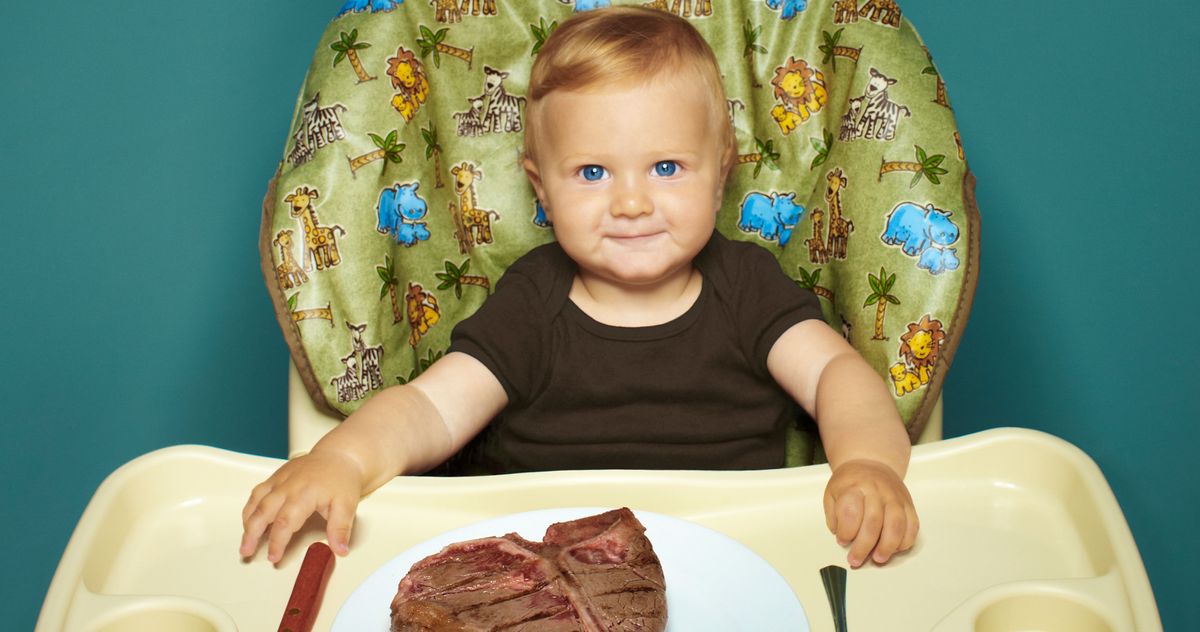Photo: Andy Ryan/Getty Images
First, it was protein muffins: flourless chocolate ones made with banana, zucchini, kale, and peanut butter that were “packed with protein” to provide “long-lasting energy for our busy little people.” I scrolled past without giving it much thought until a few weeks later, when the same Instagram account served up a recipe for a toddler protein shake. It wasn’t the only one. Next thing I knew, I was wading through recipes for Rice Krispie Treats made with hemp heart and advice to serve “leftover birthday-party candy” alongside a high-protein snack like a hard-boiled egg. Now, my feed is full of carnivore babies eating whipped bone marrow. Hannah Bronfman has been serving her 4-year-old pizza with ground-chicken crust, and Hannah Neeleman’s kids can’t get enough yogurt mixed with a scoop of Ballerina Farm protein powder. Jennifer Garner’s baby-food company, Once Upon a Farm, recently launched refrigerated protein bars for kids. Even the New York Times is here to help with high-protein bento box ideas for the start of the school year.
Given the explosion of cottage-cheese recipes and ‘What I Eat in a Day” videos featuring David bars, it was only a matter of time until protein-mania came for toddlers, too. In recent years, the rise of kid-food Instagram has made feeding young children seem like an increasingly daunting task. First, parents were sneaking vegetables into brownies and macaroni and cheese. Now, they’re worried their kids aren’t eating enough protein. Amy Palanjian, a recipe developer who posts protein muffins and smoothies on the popular account Yummy Toddler Food, says the obsession has ramped up in the past year or two. She’s noticed that kid-friendly recipes that promise protein tend to get a lot more engagement. “Now, if I post a bowl of pasta, someone’s gonna be like, Okay, but where’s the protein?”
The anxiety is understandable. Toddlers famously love beige foods, and a lot of them refuse to eat meat or chicken. “They just don’t like the texture. It’s hard for them to eat,” says Megan McNamee, a registered dietitian who runs the Instagram account Feeding Littles.
But even if their chicken breast ends up on the floor, your toddler is almost certainly getting enough protein. McNamee says that, between the ages of 1 and 3, most kids should aim to get at least 13 grams of protein a day — about two to three servings, according to the American Academy of Pediatrics. Barring certain medical complications, “almost every toddler I work with is easily meeting those needs,” says McNamee. That’s because many foods that we don’t typically think of as “high protein” actually have a decent amount of it. A cup of milk, for example, has eight grams of protein — meaning many toddlers get all the protein they need from milk alone. An egg has seven grams of protein. We tend to forget that wheat also contains protein. Laura Thomas, a registered nutritionist who writes the newsletter Can I Have Another Snack?, points out that a cup of cooked pasta — which usually has about eight grams of protein per serving — provides more than half of a toddler’s daily protein requirements. “Broadly speaking, if a toddler is growing as expected, that’s a good indication that they’re getting enough protein,” she says.
And despite what you hear from fitness and weight-loss influencers, most adults are getting plenty of protein, too. Experts recommend that healthy adults should eat at least 0.8 grams of protein per kilogram of body weight — so a person who weighs 150 pounds should aim to get a minimum of 54 grams of protein a day. According to data from the USDA, most Americans get way more than that. While there’s growing debate over whether those recommendations should be higher — particularly for people who are strength training or aging — some of the recommendations online have gotten out of control. “Now people are saying you need, like, 200 grams of protein a day,” says McNamee. “That’s insane.”
It is true that protein helps keep us full, and McNamee thinks that no matter your age, it’s worth trying to have some with every meal or snack: “If your kid is just eating fruit leathers and Goldfish, then yes, they will be hungry all the time.” But adding protein can be as simple as giving kids some crackers with cheese or peanut butter, she says. “I think there’s this idea that if you don’t have meat as the main dish, you’re not getting enough protein,” says Palanjian. “That’s just not true — for adults or for kids.”
Meanwhile, evidence suggests that parents might want to focus more on fiber — a nutrient most American children actually don’t get enough of. But according to Palanjian, that’s a much harder sell on Instagram. She recently put together a collection of high-fiber recipes, like chickpea fritters and black-bean soup. “I think I mentioned it on Instagram one time,” she says. “Nobody cared.”
